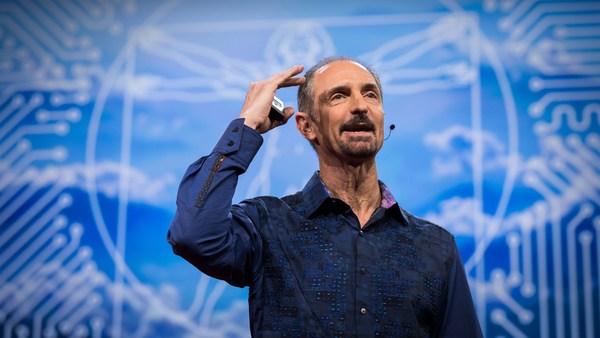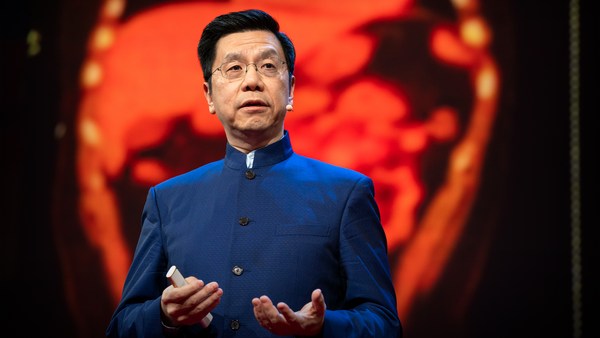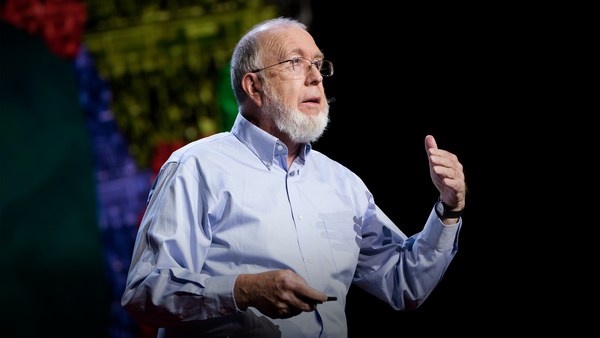AI could add 16 trillion dollars to the global economy in the next 10 years. This economy is not going to be built by billions of people or millions of factories, but by computers and algorithms. We have already seen amazing benefits of AI in simplifying tasks, bringing efficiencies and improving our lives. However, when it comes to fair and equitable policy decision-making, AI has not lived up to its promise. AI is becoming a gatekeeper to the economy, deciding who gets a job and who gets an access to a loan. AI is only reinforcing and accelerating our bias at speed and scale with societal implications. So, is AI failing us? Are we designing these algorithms to deliver biased and wrong decisions?
As a data scientist, I'm here to tell you, it's not the algorithm, but the biased data that's responsible for these decisions. To make AI possible for humanity and society, we need an urgent reset. Instead of algorithms, we need to focus on the data. We're spending time and money to scale AI at the expense of designing and collecting high-quality and contextual data. We need to stop the data, or the biased data that we already have, and focus on three things: data infrastructure, data quality and data literacy.
In June of this year, we saw embarrassing bias in the Duke University AI model called PULSE, which enhanced a blurry image into a recognizable photograph of a person. This algorithm incorrectly enhanced a nonwhite image into a Caucasian image. African-American images were underrepresented in the training set, leading to wrong decisions and predictions. Probably this is not the first time you have seen an AI misidentify a Black person's image. Despite an improved AI methodology, the underrepresentation of racial and ethnic populations still left us with biased results.
This research is academic, however, not all data biases are academic. Biases have real consequences.
Take the 2020 US Census. The census is the foundation for many social and economic policy decisions, therefore the census is required to count 100 percent of the population in the United States. However, with the pandemic and the politics of the citizenship question, undercounting of minorities is a real possibility. I expect significant undercounting of minority groups who are hard to locate, contact, persuade and interview for the census. Undercounting will introduce bias and erode the quality of our data infrastructure.
Let's look at undercounts in the 2010 census. 16 million people were omitted in the final counts. This is as large as the total population of Arizona, Arkansas, Oklahoma and Iowa put together for that year. We have also seen about a million kids under the age of five undercounted in the 2010 Census.
Now, undercounting of minorities is common in other national censuses, as minorities can be harder to reach, they're mistrustful towards the government or they live in an area under political unrest.
For example, the Australian Census in 2016 undercounted Aboriginals and Torres Strait populations by about 17.5 percent. We estimate undercounting in 2020 to be much higher than 2010, and the implications of this bias can be massive.
Let's look at the implications of the census data. Census is the most trusted, open and publicly available rich data on population composition and characteristics. While businesses have proprietary information on consumers, the Census Bureau reports definitive, public counts on age, gender, ethnicity, race, employment, family status, as well as geographic distribution, which are the foundation of the population data infrastructure. When minorities are undercounted, AI models supporting public transportation, housing, health care, insurance are likely to overlook the communities that require these services the most.
First step to improving results is to make that database representative of age, gender, ethnicity and race per census data. Since census is so important, we have to make every effort to count 100 percent. Investing in this data quality and accuracy is essential to making AI possible, not for only few and privileged, but for everyone in the society.
Most AI systems use the data that's already available or collected for some other purposes because it's convenient and cheap. Yet data quality is a discipline that requires commitment -- real commitment. This attention to the definition, data collection and measurement of the bias, is not only underappreciated -- in the world of speed, scale and convenience, it's often ignored.
As part of Nielsen data science team, I went to field visits to collect data, visiting retail stores outside Shanghai and Bangalore. The goal of that visit was to measure retail sales from those stores. We drove miles outside the city, found these small stores -- informal, hard to reach. And you may be wondering -- why are we interested in these specific stores? We could have selected a store in the city where the electronic data could be easily integrated into a data pipeline -- cheap, convenient and easy. Why are we so obsessed with the quality and accuracy of the data from these stores? The answer is simple: because the data from these rural stores matter. According to the International Labour Organization, 40 percent Chinese and 65 percent of Indians live in rural areas. Imagine the bias in decision when 65 percent of consumption in India is excluded in models, meaning the decision will favor the urban over the rural.
Without this rural-urban context and signals on livelihood, lifestyle, economy and values, retail brands will make wrong investments on pricing, advertising and marketing. Or the urban bias will lead to wrong rural policy decisions with regards to health and other investments. Wrong decisions are not the problem with the AI algorithm. It's a problem of the data that excludes areas intended to be measured in the first place. The data in the context is a priority, not the algorithms.
Let's look at another example. I visited these remote, trailer park homes in Oregon state and New York City apartments to invite these homes to participate in Nielsen panels. Panels are statistically representative samples of homes that we invite to participate in the measurement over a period of time. Our mission to include everybody in the measurement led us to collect data from these Hispanic and African homes who use over-the-air TV reception to an antenna. Per Nielsen data, these homes constitute 15 percent of US households, which is about 45 million people. Commitment and focus on quality means we made every effort to collect information from these 15 percent, hard-to-reach groups.
Why does it matter? This is a sizeable group that's very, very important to the marketers, brands, as well as the media companies. Without the data, the marketers and brands and their models would not be able to reach these folks, as well as show ads to these very, very important minority populations. And without the ad revenue, the broadcasters such as Telemundo or Univision, would not be able to deliver free content, including news media, which is so foundational to our democracy.
This data is essential for businesses and society. Our once-in-a-lifetime opportunity to reduce human bias in AI starts with the data. Instead of racing to build new algorithms, my mission is to build a better data infrastructure that makes ethical AI possible. I hope you will join me in my mission as well.
Thank you.





